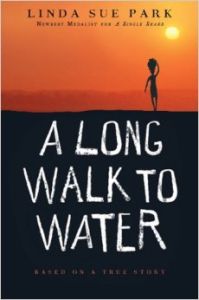 The Camping Trip That Changed America: Theodore Roosevelt, John Muir, and our National Parks by Barb Rosenstock & illustrated by Mordicai Gerstein. While School Library Journal recommends this book for grades 1-4, I would read it to grades 3 and up, including middle school students, as a way to introduce the subject of preservation of our natural resources. Parts of this book are very relevant to current events. Pair this book with the 2009 book by Ginger Wadsworth, Camping with the President, for comparison of this same camping trip taken by President Roosevelt and naturalist John Muir.
The Camping Trip That Changed America: Theodore Roosevelt, John Muir, and our National Parks by Barb Rosenstock & illustrated by Mordicai Gerstein. While School Library Journal recommends this book for grades 1-4, I would read it to grades 3 and up, including middle school students, as a way to introduce the subject of preservation of our natural resources. Parts of this book are very relevant to current events. Pair this book with the 2009 book by Ginger Wadsworth, Camping with the President, for comparison of this same camping trip taken by President Roosevelt and naturalist John Muir.
-Terri McDougal, Head of Children’s Services, Kanawha County Public Library
 Camping with the President by Ginger Wadsworth and illustrated by Karen Dugan. This is a carefully researched and true story of the May 1903 camping trip where President Theodore Roosevelt dismissed his Secret Service agents and sent away reporters to spend three nights with famous naturalist John Muir in California’s Yosemite National Park.
Camping with the President by Ginger Wadsworth and illustrated by Karen Dugan. This is a carefully researched and true story of the May 1903 camping trip where President Theodore Roosevelt dismissed his Secret Service agents and sent away reporters to spend three nights with famous naturalist John Muir in California’s Yosemite National Park.
 House Held up by Trees by Ted Kooser. Although School Library Journal recommends this for grades 3 to 5, I’m not sure how much 3rd graders will appreciate this picture book. I think it could be read to middle school and even high school students. Written by former U.S. Poet Laureate Ted Kooser, this is a melancholy story of a house and the family who once lived there and nature’s reclamation of the house when it is left empty for years.
House Held up by Trees by Ted Kooser. Although School Library Journal recommends this for grades 3 to 5, I’m not sure how much 3rd graders will appreciate this picture book. I think it could be read to middle school and even high school students. Written by former U.S. Poet Laureate Ted Kooser, this is a melancholy story of a house and the family who once lived there and nature’s reclamation of the house when it is left empty for years.
— Terri McDougal
[
 The Mangrove Tree: Planting Trees to Feed Families
The Mangrove Tree: Planting Trees to Feed Families by Susan L. Roth and Cindy Trumbore. School Library Journal recommends this title for grades 3 to 6, but it is written in a manner that allows it to be shared with younger children by reading only the text on the left-hand pages. Those pages are written in the cumulative style of “The House that Jack Built.” The right-hand pages provide more factual information about the efforts of Dr. Gordon Soto to plant mangrove trees in the small African country of Eritrea. An inspiring account of one man’s contribution to combating poverty and hunger.
— Terri McDougal
 Eliza’s Cherry Trees: Japan’s Gift to America by Andrea Zimmerman. While School Library Journal recommends this title for grades 4 to 6, I think it is also possible to read it to 3rd graders. Eliza’s Cherry Trees is both a biography of Eliza Scidmore, author, photographer, and first woman to hold an important job at the National Geographic Society, and her decades-long quest to bring
Eliza’s Cherry Trees: Japan’s Gift to America by Andrea Zimmerman. While School Library Journal recommends this title for grades 4 to 6, I think it is also possible to read it to 3rd graders. Eliza’s Cherry Trees is both a biography of Eliza Scidmore, author, photographer, and first woman to hold an important job at the National Geographic Society, and her decades-long quest to bring
cherry trees from Japan to plant in Washington, D.C. This is the story of a remarkable woman about whom little is known.
— Terri McDougal
 Henry Hikes to Fitchburg by D.B Johnson. Henry, a bear with a remarkable resemblance to Henry David Thoreau, sets out to meet his friend in Fitchburg. His friend will take the train. Who will get there first?
Henry Hikes to Fitchburg by D.B Johnson. Henry, a bear with a remarkable resemblance to Henry David Thoreau, sets out to meet his friend in Fitchburg. His friend will take the train. Who will get there first?
— Raleigh County Read Aloud
 Boys of Steel: The Creators of Superman by Marc Tyler Nobleman. The format is a picture book, but this is a seriously researched biography of Jerry Siegel and Joe Shuster, a couple of mild-mannered teens of the Depression era who created an enduring, idealistic superhero — Superman. It is a story from when comic books were a new format. Illustrations by Ross MacDonald evoke the era.
Boys of Steel: The Creators of Superman by Marc Tyler Nobleman. The format is a picture book, but this is a seriously researched biography of Jerry Siegel and Joe Shuster, a couple of mild-mannered teens of the Depression era who created an enduring, idealistic superhero — Superman. It is a story from when comic books were a new format. Illustrations by Ross MacDonald evoke the era.
 Bill the Boy Wonder: The Secret Co-Creator of Batman by Marc Tyler Nobleman. Another picture book biography, this one about Bill Finger, the guy responsible for much of what we know as Batman, but who was never credited.
Bill the Boy Wonder: The Secret Co-Creator of Batman by Marc Tyler Nobleman. Another picture book biography, this one about Bill Finger, the guy responsible for much of what we know as Batman, but who was never credited.
The author keeps the story understandable for young readers or listeners, but does not shy away from the conflict and difficulty in the lives of these comic book creators. Ty Templeton’s illustrations parallel comic book imagery of the time.
 Henry Works by D.B. Johnson.
Henry Works by D.B. Johnson.
Henry the Bear never gets paid, but on his “walk to work” he stays busy. He waters flowers and finds a healing plant for a neighbor. He brings news of a coming storm and sets a path of stone across a stream. It is a gentle, transendental delight.
— Raleigh County Read Aloud
 Henry Climbs a Mountain by D.B. Johnson.
Henry Climbs a Mountain by D.B. Johnson.
This book is a deep and beautifully illustrated version of the story of Henry David Thoreau’s night in jail in 1846, where he was taken for refusing to pay a poll tax, his protest against slavery.
— Raleigh County Read Aloud
 14 Cows for America by Carmen Agra Deedy.
14 Cows for America by Carmen Agra Deedy.
A man returns to his Maasai village in Kenya with news of the Sept. 11 terrorist attacks in America. Villagers are moved to give a healing gift to all Americans.
— Raleigh County Read Aloud
 Bad News for Outlaws: The Remarkable Life of Bass Reeves, Deputy U.S. Marshal, by Vaunda Micheaux Nelson. As promised, this is the remarkable, true story of a man born in slavery in 1838, who flees to the West and is hired by a U.S. judge to bring law and order to territory that is now Oklahoma. Arresting illustrations by R. Gregory Christie.
Bad News for Outlaws: The Remarkable Life of Bass Reeves, Deputy U.S. Marshal, by Vaunda Micheaux Nelson. As promised, this is the remarkable, true story of a man born in slavery in 1838, who flees to the West and is hired by a U.S. judge to bring law and order to territory that is now Oklahoma. Arresting illustrations by R. Gregory Christie.
— Raleigh County Read Aloud
 The Chocolate Touch by Patrick Skene Catling and Margot Apple (Illustrator).
The Chocolate Touch by Patrick Skene Catling and Margot Apple (Illustrator).
A boy gets a magic box of candy, and then everything he touches turns to chocolate, just like Midas.
— Raleigh County Read Aloud
 A Tale Dark & Grimm by Adam Gidwitz.
A Tale Dark & Grimm by Adam Gidwitz.
After this elementary teacher got over the horror of the blood and violence of the original Grimm’s Fairy Tales, he saw some value in them, and wove them together in a modern, yet more faithful story about Hansel and Gretel, finding their way in a scary, dangerous world. My fourth and fifth grade listeners begged to hear more of this book.
— Dawn Miller, RAWV Advisory Board Member
 The Best Christmas Pageant Ever by Barbara Robinson.
The Best Christmas Pageant Ever by Barbara Robinson.
If you want a funny and warm story to share each evening during the holiday season, treat yourself to this story. Parents will recognize the children’s Christmas pageants of their youth (or maybe the present), and the characters are lovable and boisterous.
— Dawn Miller
 Nelson Mandela by Kadir Nelson, author and illustrator. “My work is all about healing and giving people a sense of hope and nobility,” the author writes. “I want to show the strength and integrity of the human being and the human
Nelson Mandela by Kadir Nelson, author and illustrator. “My work is all about healing and giving people a sense of hope and nobility,” the author writes. “I want to show the strength and integrity of the human being and the human
spirit.” His illustrations are almost photographic. He is one of my favorite children’s book creators.
— Terri McDougal
About our contributors:
Terri McDougal is director of children’s services at the Kanawha County Public Library and a board member of Read Aloud West Virginia.
Dawn Miller is editorial page editor of the The Charleston Gazette-Mail, a 20-year Read Aloud West Virginia volunteer, and a former chair of Read Aloud’s board.


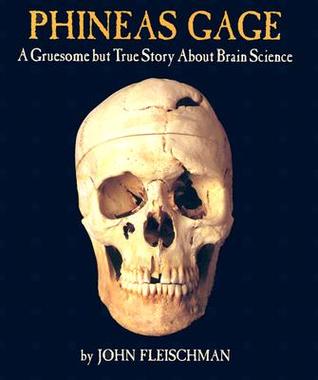




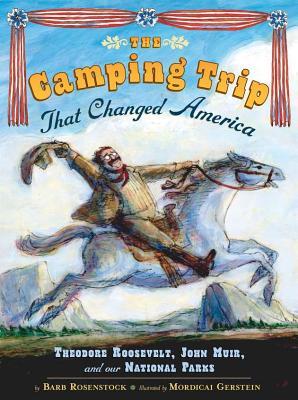
















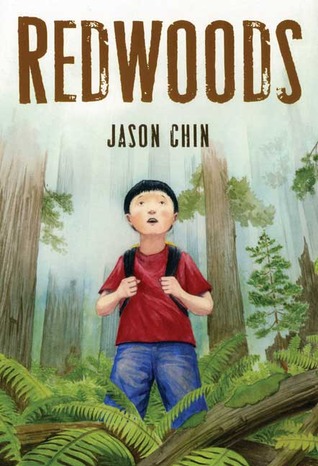














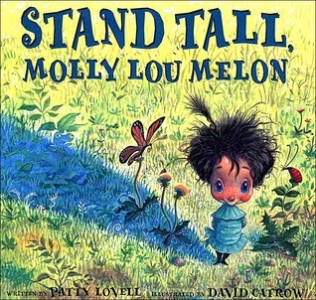
 , Molly Lou Melon by Patty Lovell and illustrated by David Catrow. Molly Lou is the shortest kid in first grade and has big buck teeth. Her grandmother tells her to stand tall and smile big. Fun, cute, whimsical illustrations make a nice lesson, but a nicer story.
, Molly Lou Melon by Patty Lovell and illustrated by David Catrow. Molly Lou is the shortest kid in first grade and has big buck teeth. Her grandmother tells her to stand tall and smile big. Fun, cute, whimsical illustrations make a nice lesson, but a nicer story.










